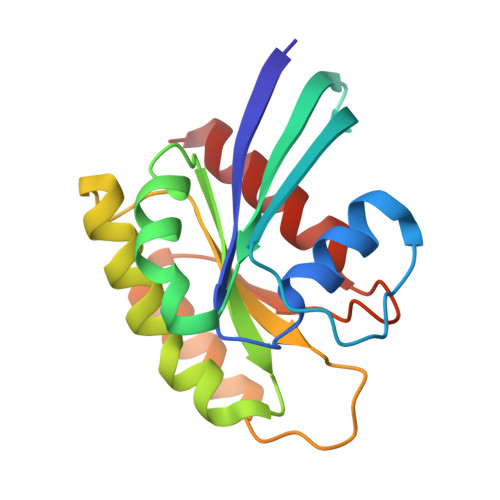The small GTPases K-Ras, N-Ras, and H-Ras have distinct biochemical properties determined by allosteric effects.
Johnson, C.W., Reid, D., Parker, J.A., Salter, S., Knihtila, R., Kuzmic, P., Mattos, C.(2017) J Biol Chem 292: 12981-12993
- PubMed: 28630043
- DOI: https://doi.org/10.1074/jbc.M117.778886
- Primary Citation of Related Structures:
5UHV - PubMed Abstract:
H-Ras, K-Ras, and N-Ras are small GTPases that are important in the control of cell proliferation, differentiation, and survival, and their mutants occur frequently in human cancers. The G-domain, which catalyzes GTP hydrolysis and mediates downstream signaling, is 95% conserved between the Ras isoforms. Because of their very high sequence identity, biochemical studies done on H-Ras have been considered representative of all three Ras proteins. We show here that this is not a valid assumption. Using enzyme kinetic assays under identical conditions, we observed clear differences between the three isoforms in intrinsic catalysis of GTP by Ras in the absence and presence of the Ras-binding domain (RBD) of the c-Raf kinase protein (Raf-RBD). Given their identical active sites, isoform G-domain differences must be allosteric in origin, due to remote isoform-specific residues that affect conformational states. We present the crystal structure of N-Ras bound to a GTP analogue and interpret the kinetic data in terms of structural features specific for H-, K-, and N-Ras.
Organizational Affiliation:
Department of Chemistry and Chemical Biology, Northeastern University, Boston, Massachusetts 02115.

















